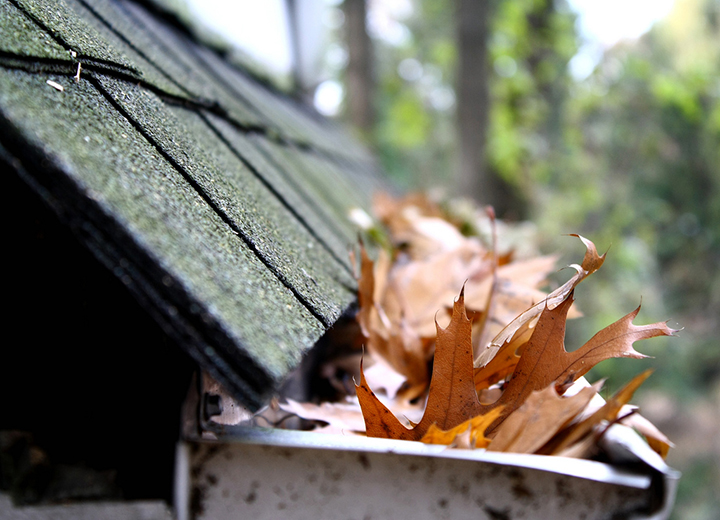TORONTO – Now that October is over you might be feeling overwhelmed by all the fall yardwork you still have left on your ‘to do’ list and might be feeling like there is no end in sight.

Here are five ways to help make the process easier so you can start focusing on more important things (like decorating for the holidays).
Get a leaf blower
Leaf blowers used to be noisy polluters that annoyed neighbours more than helped blow leaves around. With new, more environmentally-friendly models on the market there’s no reason to shy away from them nowadays (especially if you have a large, tree-covered property).
After being extremely impressed with the battery-powered EGO Power+ Mower over the summer (which is also great at mulching leaves), I picked up the Ego Power+ Blower earlier this season to help get my leaf problem under control. Like the mower, the blower is extremely quiet, equally as powerful as any gas model I have worked with, and the 56-volt lithium-ion rechargeable battery lasts a long time and can recharge fully in about 30 to 40 minutes. The only downside is that the battery for the blower and the mower are different and cannot be interchanged.
While none are as powerful as the EGO Power+ Blower, Stihl, Toro, and Ryobi all make quality battery-operated blowers that are eco- and neighbour-friendly.
WATCH: EGO Power+ Blower info video
Install gutter guards
If your house is surrounded by trees like mine is, you’ll know how much of a pain it is to constantly have to get up on a ladder to clean out your gutters when they get clogged with leaves and other tree debris.
To help with this problem, gutter guards are a great solution. These come in a variety of styles, materials and price ranges, but all do the same thing – allow water to enter your gutters without letting leaves and other debris in.

Get daily National news
READ MORE: 7 tips to get your home ready for fall
While these are not 100 per cent perfect and are not maintenance free as advertised, they do a good job at keeping the big stuff out and will cut down on how many times you need to break out the ladder to scoop out the clogged gutters.
Do your research before installing gutter guards yourself or have a company install them as they can be costly (a less expensive DIY solution is to get a roll of wire or nylon mesh and make your own coverings).
Wear solid, waterproof gloves
There is nothing worse than having your gloves leak when working in the yard. Investing in a solid, waterproof pair of gloves will not only keep you more comfortable, but will also help prevent your hands from chapping or cracking.
I’ve found Lee Valley’s Nitrile Gripper Gloves to be a good quality build that still give me freedom to do delicate tasks. They are also priced decent, at about $8.50 a pair.
For more serious work, Youngstown’s line of gloves are highly recommended. They cost more, but will last you through the winter months as well. A pair of their Waterproof Winter Plus gloves runs about US$34.99 but will hold up in the harshest weather.
Rent a log splitter
If you stockpile wood for your fireplace (or still have downed trees from last winter) a log splitter is a must-rent.
The most common log splitters use a hydraulic piston to force a blade into a log that’s been cut down to about 2-feet in length. The force instantly splits the log into smaller, more manageable sizes. While electric and manual models exist, most rental shops only have gas powered models available.
READ MORE: Green your yardwork with new line of battery-powered tools
While log splitters do a good job with softwood, you’ll really be thankful when you see how they handle hardwood like maple, beech and ash. In the time it would take you to split one of these logs by hand, a log splitter could have an entire tree done.
Expect to pay about $100 for a full day rental (some rental shops have half-day deals so it’s best to call around). Log splitters are not small and will need to be either towed or put into a large truck or van to get to your property.
WATCH: How a hydraulic log splitter works
Leave your leaves where they are
If you only have a small amount of leaves (enough to evenly cover your lawn without having massive piles) leaving them on the ground for the winter won’t hurt your grass. On the other hand, if you have giant piles all over the place you could end up doing a lot of damage. To be safe, mulching the leaves before the first snowfall is a good idea.
The best way to do this quickly is with a lawnmower. Spread out the leaves and, without the bag attachment, mow over them as if you were mowing your grass (you may need to take a few passes to get them all). The small remnants of leaves left behind will breakdown over the winter and help fertilize your lawn.
Even if you have to mulch them, leaving your leaves on the ground for the winter is less time-consuming than having to rake and bag them. It will also save you from spending money on those paper bags most municipal dumps require yard waste be disposed in.
SOUND OFF: Have a tip you’d like to share with us or a home-related question? Let us know in the comments below or on our Facebook page.
Above photo courtesy Flickr user Lauren Finkel. Used under a Creative Commons 2.0 license.






Comments